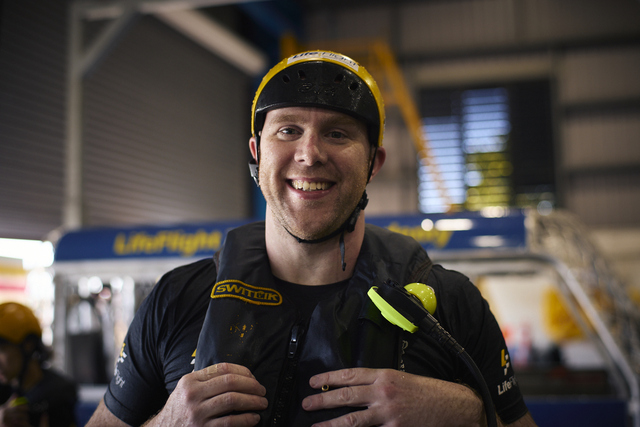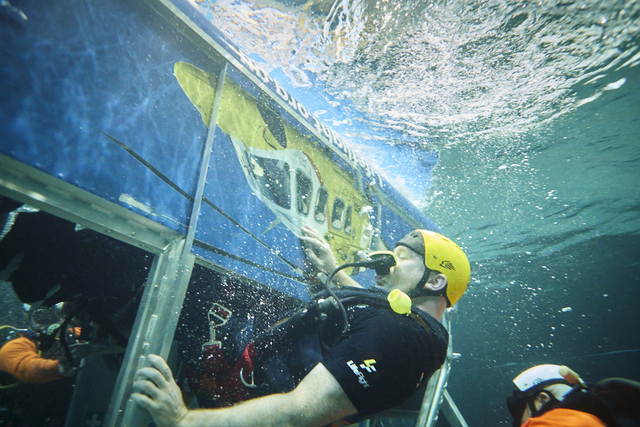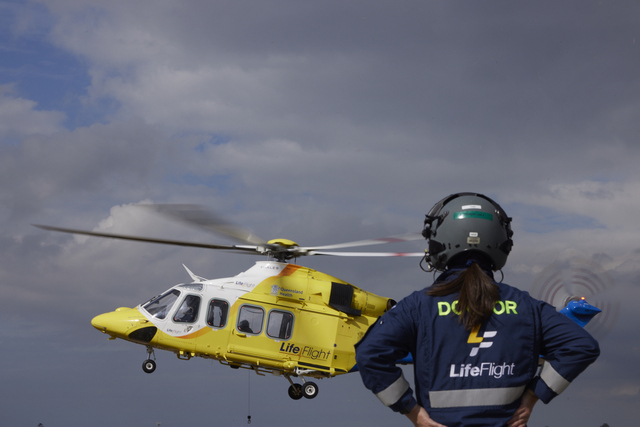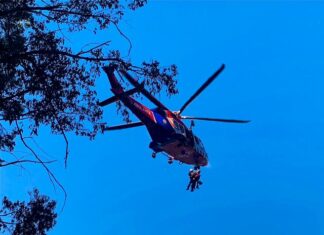
Dr Matt Brooks is a long way from home but couldn’t feel more comfortable on some of Queensland’s most beautiful beaches.
The English retrieval registrar will join Taz Dissanayake and Davina Seidel as one of three new critical care doctors to start their new career in the sky at the LifeFlight Sunshine Coast aeromedical base.
Dr Brooks said joining LifeFlight was the perfect opportunity for a new career challenge.
“My mentor has worked for LifeFlight in the past and a lot of the doctors that I do look up to have all had that LifeFlight experience,” he said.
Dr Brooks said he found the Helicopter Underwater Escape Training (HUET) experience to be incredibly rewarding.
“I think completing the HUET course is vital and it’s part of the LifeFlight mantra in being prepared and preparing for any unexpected situation,” he said.
“It’s more challenging than I thought it would be because I’m quite a good swimmer.
“I’m used to the water, but I’m not used to breathing upside down and in the water, as well as trying to get out of the fake helicopter (simulator).”
Dr Brooks is one of 26 doctors about to head to their new bases across Queensland. But first, the new critical care doctors had to undergo a week of intensive aeromedical training at the LifeFlight Training Academy, and complete Helicopter Underwater Escape Training (HUET), rescue winching and clinical scenario training.
More than 180 medical professionals, including doctors, are employed by LifeFlight, making it the largest employer of aeromedical doctors in Australia.
LifeFlight HUET manager Mick Dowling, said the doctors go through four scenarios in the simulator to equip them with the necessary skills to escape an underwater helicopter, in the unlikely event of a crash into water.
“Worldwide figures tell us that when an aircraft or helicopter goes into the water, it’s going to rotate over because it’s top heavy,” Mr Dowling said.
“In our simulation training, the occupants are put into a position that replicates the helicopter.
“The simulator allows us to teach them the skills to stay orientated, and once they have adopted those skills, they will have no problems finding exits.”
After been submerged, spun and lifted out of the water, the doctors took to the sky for winch training.
LifeFlight aircrew officer Brett Hansen, said the winching exercises taught doctors the vital life-saving skills needed to reach patients located in remote and often inaccessible areas.
“As a rescue organisation, winching is probably the most dangerous thing we do and it’s pretty crucial to how we operate,” Mr Hansen said.
The new critical care doctors were taken through winching individually, then in pairs and finally with a stretcher as part of the exercises.
“When operating in a confined area that we can’t land in, it’s crucial to have those skills,” he said.
The new recruits also put their pre-hospital clinical skills to the test at the Queensland Combined Emergency Services Academy at Whyte Island in Brisbane, where they participated in several high-pressure scenarios.
Each simulation was designed to mimic a real-life, worst-case scenario the doctors may be confronted with, such as a multi-casualty car crash, a house party incident and a boating disaster.
The Sunshine Coast based LifeFlight aeromedical crew helped 600 people in FY24 – representing a 19 per cent increase on the previous year.
The crew notched more than 967 hours in the air across 628 missions and attended a wide range of incidents, ranging from plane crashes through to abseiling and swimming incidents.
The majority of LifeFlight critical care doctors’ work is performed on behalf of Queensland Health, tasked by Retrieval Services Queensland, within Queensland Ambulance Service.








